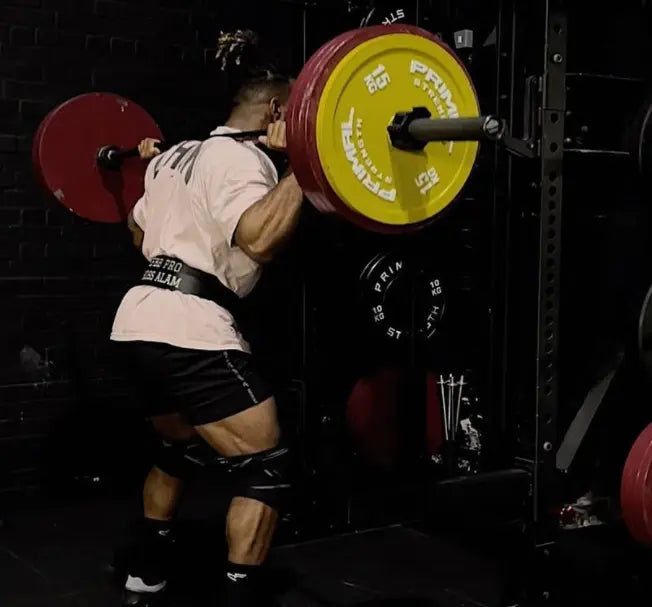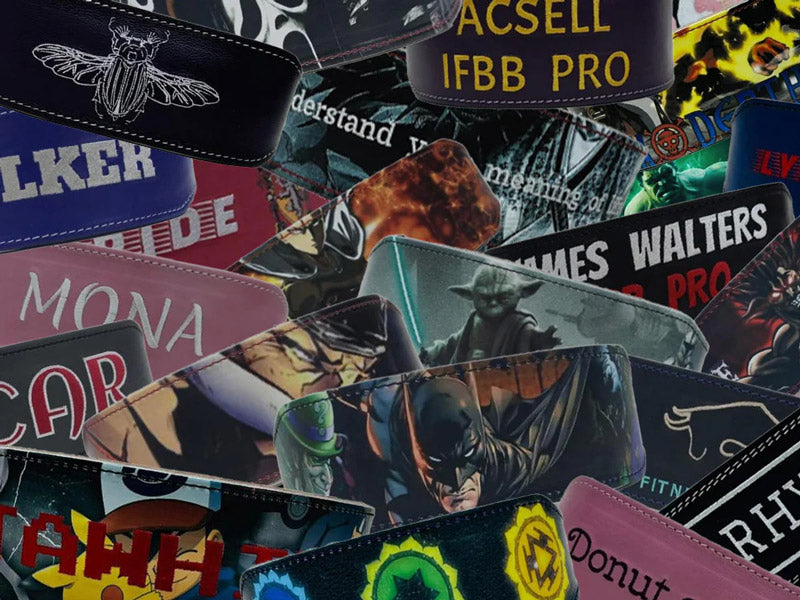
Safe Squats: Tips and Tricks for Building Stronger Legs
The Importance of Squatting Safely
Sometimes referred to as ‘The King of All Exercises’, the squat works every muscle in your lower body, as well as your abdomen and lower back.
Because of this, the squat is one of the most effective exercises for putting on slabs of muscle and getting your legs to resemble massive tree trunks instead of dried spaghetti noodles.
Many people, especially those new to lifting, find the squat to be incredibly intimidating, and with good reason. Due to the nature of the lift, you’ll often find yourself using a heavy amount of weight. With an increase in weight, you may find a higher chance of sustaining an injury.
This is unfortunate, though, because the squat is an underutilized lift, and when done properly can help even the biggest newbies make massive gains. With that in mind, we’ve decided to educate you all on some of the best tips for being safe while squatting at the gym. Hopefully with this knowledge, you’ll feel comfortable enough to start squatting on your own and make the most out of leg day.
First Off, a Basic Introduction
Before we get into how to stay safe while squatting, let’s go over the basics of the squat, including what it is and what muscles it works.
The squat is what’s known as a Compound Exercise. Compound Exercises are multi-joint movements that work several muscle groups at a time. Compound Exercises are at the heart of most exercise programs and include the squat, deadlift, bench press, bent over row, and many others.
The primary muscles recruited in performing a squat are the quadriceps, hamstrings and gluten. The calf muscles, hips and core muscles are also used for stabilizing.
5 Common Mistakes Made When Squatting
Mistake # 1: Rounding the lower back- One of the worst things you can do while squatting heavy is round out your lower back. This puts additional pressure on the vertebrae and can lead to injuries, such as a herniated disc. When you’re squatting, be mindful of keeping your back straight while bending at the hip on the way down.
Another way to keep the back straight, while also gaining additional abdominal support, is to use a weight belt. A weight belt, if used properly, increases intra-abdominal pressure and can help you maintain proper spinal alignment. A properly-fitted weight belt is also useful for many other lifts, including the deadlift and bent over rows. Check out our line of lifting belts here.
Mistake #2: Coming onto your toes- A lot of people in the gym have a low level of flexibility, and as a result won’t be able to squat all the way down without coming off of their heels. This is a big mistake, as being on your toes is a far less stable position than resting on your heels. Many seasoned lifters actually recommend slightly lifting your toes when squatting, to prevent you from leaning forward. Remember, keep the weight on your heels and sit back into the squat.
Mistake #3: Not going low enough- Another common issue you’ll notice is people only squatting half way down. This is another issue that can lead to muscular imbalances and injuries, especially of the knee. While a half squat will work your quadriceps, it neglects the much stronger gluten and ham strings while putting additional stress on the knee.

Mistake #4: Starting with the knees- Starting the squat with the knees is another common mistake made by people new to squatting. It might seem natural and comfortable, but it will put more weight on the knee than necessary. Instead, think of sitting back with your butt and hips first, almost like you’re sitting down onto the toilet.
One method used to master this technique is performing air squats, or unweighted squats, in front of a chair. Work on slowly sitting down into the chair with proper squat form, and just barely touch your butt to the chair’s surface. Doing this for a few reps every day will help improve your squat form.
Mistake #5: Knees drifting inward- The final mistake we’re going to discuss is that of people letting their knees move inward on their way down. It may help you go lower at first, but once you start getting to heavier weights it can lead to knee injury. Instead, try to keep your knees directly above your feet; your knees should be pointing in the same direction as your toes.
Additional Tips for Safer Squats
Tip #1: Start with a lighter weight- While we doubt any of us has gone into the gym looking to lift less weight than the day before, with squats it may be beneficial to start with a lower weight, or even just an empty barbell. This will allow you to focus on perfecting your form while minimizing the risk of injury.
Tip #2: Wear a weight belt- Wearing a weight belt can definitely help with your squats. The presence of the belt can serve as a reminder to keep a straight, neutral spine while lifting, and the additional pressure created by a proper-fitted belt serves to keep your core tight. Gunsmith Fitness offers a wide variety of Weight Lifting Belts, from leather to nylon, and even Custom Powerlifting Belts.

Tip #3: Take a deep breath, and hold- Just like with most big lifts, it’s a good idea to take a deep breath during the rest phase of the rep and hold it for the duration of the rep. For lifts such as the deadlift and squat, this is especially important because the deep breath allows for more intra-abdominal pressure, which stabilizes your back and core muscles.
Tip #4: Pull the barbell down HARD- While it may sound counterintuitive, pulling the barbell down with your arms and lats can increase your max weight on the squat. By grabbing with a tight grip and pulling the barbell into your traps, you’re activating more muscles and telling your Central Nervous System that it’s time to do battle.
Some Recommended Gym Gear for Big Squats
Besides the obvious Weight Lifting Belt, there are a few accessories that can help you stay safe in the squat rack while improving your form and building muscle. While none of these are necessary to build a deep, powerful squat, they each have their place in the experienced lifter’s gym bag.
Mobility Glute Bands- These elastic bands have an infinite number of uses, but can be especially useful when training the squat. One of the most common methods of using Mobility/ Glute Bands when squatting is to wrap the bands just above the knees. The internal pressure of the bands forces you to spread your knees out, which encourages proper form while working your hips and glutes.

Knee Wraps/ Knee Sleeves- Knee Wraps and Knee Sleeves are very similar, yet have much different uses. While the benefits of each is outside the scope of this article, they both have their place in preventing knee injuries while squatting. Be sure to check out our selection of premium quality Knee Wraps here, and Knee Sleeves here.
Barbell Squat Pad- A barbell squat pad is usually a piece of foam that goes between the barbell and your back, which can prevent scraping from the bar and relieve some of the pressure on your back and traps. While many gyms will have on lying around the weight room, they’re often old and beat up, so it’s better to bring your own. Check out Gunsmith Fitness’ Next Gen Barbell Squat Pad here. It’s made of thick, high-quality foam for comfort, and has an anti-slip coating on the outside for safety. The cut out in the middle of the pad reduces pressure on the spine at the neck, allowing you to lift more for longer.
Conclusion
While the squat can be an intimidating lift for beginners, the benefits are undeniable. By following the tips in this article, you can learn to squat safely and keep lifting injury-free for years to come. Be sure to avoid the mistakes listed above, and check out some of our gear to help you reach your performance goals. Happy Squatting!





